Fanjingshan: A Sacred Mountain Considered To Be The Bodhimanda Of The Maitreya Buddha In China
Fanjingshan, also known as Mount Fanjing, is a stunning peak in southeastern China’s Wuling Mountains.
As the highest peak of the Wuling Mountains, standing at 2,570 meters (8,430 feet) high, it is the tallest peak in the range.
This mountain is not only a natural wonder but also a sacred site steeped in Buddhist tradition and ecological importance.
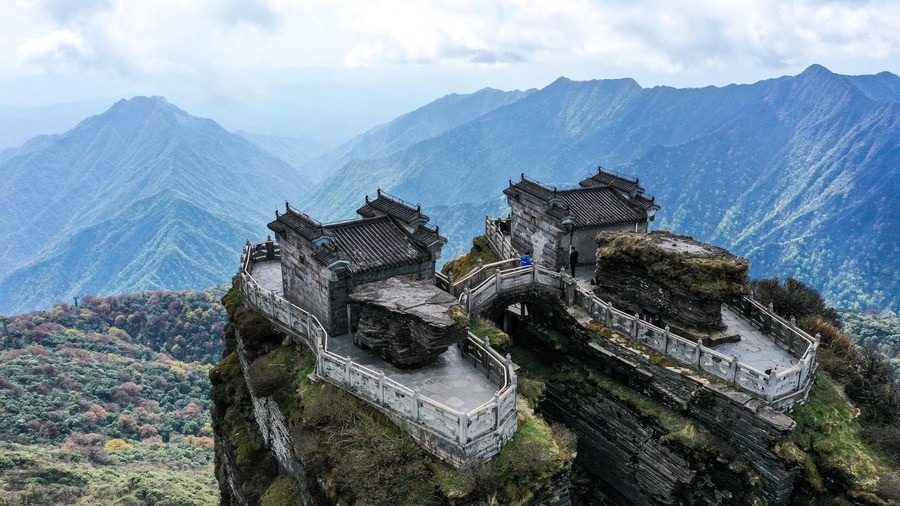
A Sacred Mountain
The name “Fanjingshan” comes from *Fantian Jingtu* (梵天净土), meaning “Brahma’s Pure Land.”
In Buddhism, it is believed to be the sacred place of the Maitreya Buddha, who represents the future.
The mountain has been a site of Buddhist worship since at least the 7th century BCE when Buddhist temples were first established along the Zangke Road
During the Ming Dynasty (1368–1644), around 50 Buddhist temples were built on the mountain.
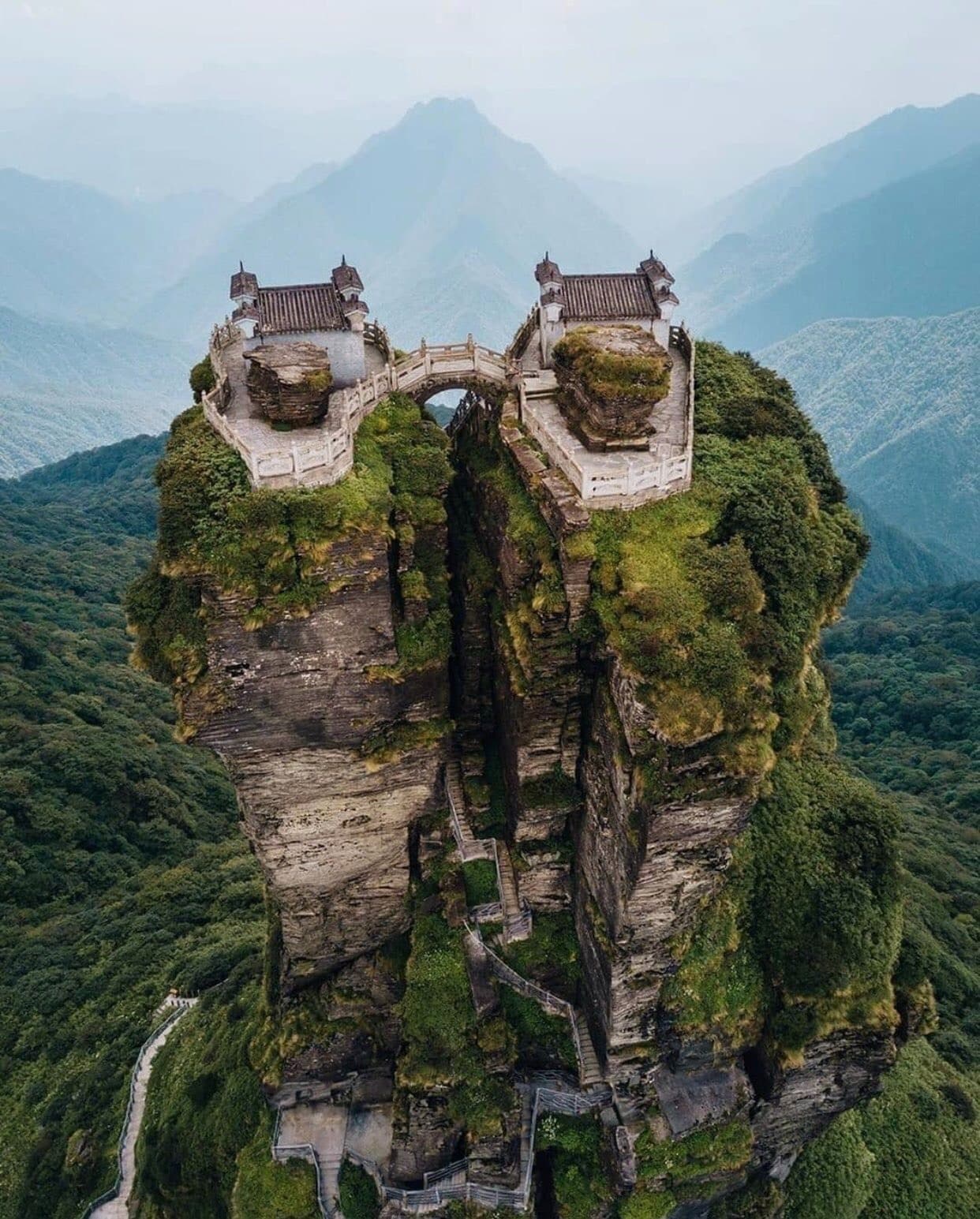
Today, the most famous temples are the Temple of the Buddha and the Maitreya Temple, located at the Red Clouds Golden Peak (红云金顶).
These temples sit 2,336 meters (7,664 feet) above sea level and are connected by a narrow stone bridge over the Gold Sword Gorge.
The journey to these temples involves climbing nearly 9,000 steps or taking a cable car to Mushroom Stone, a unique rock formation near the top.
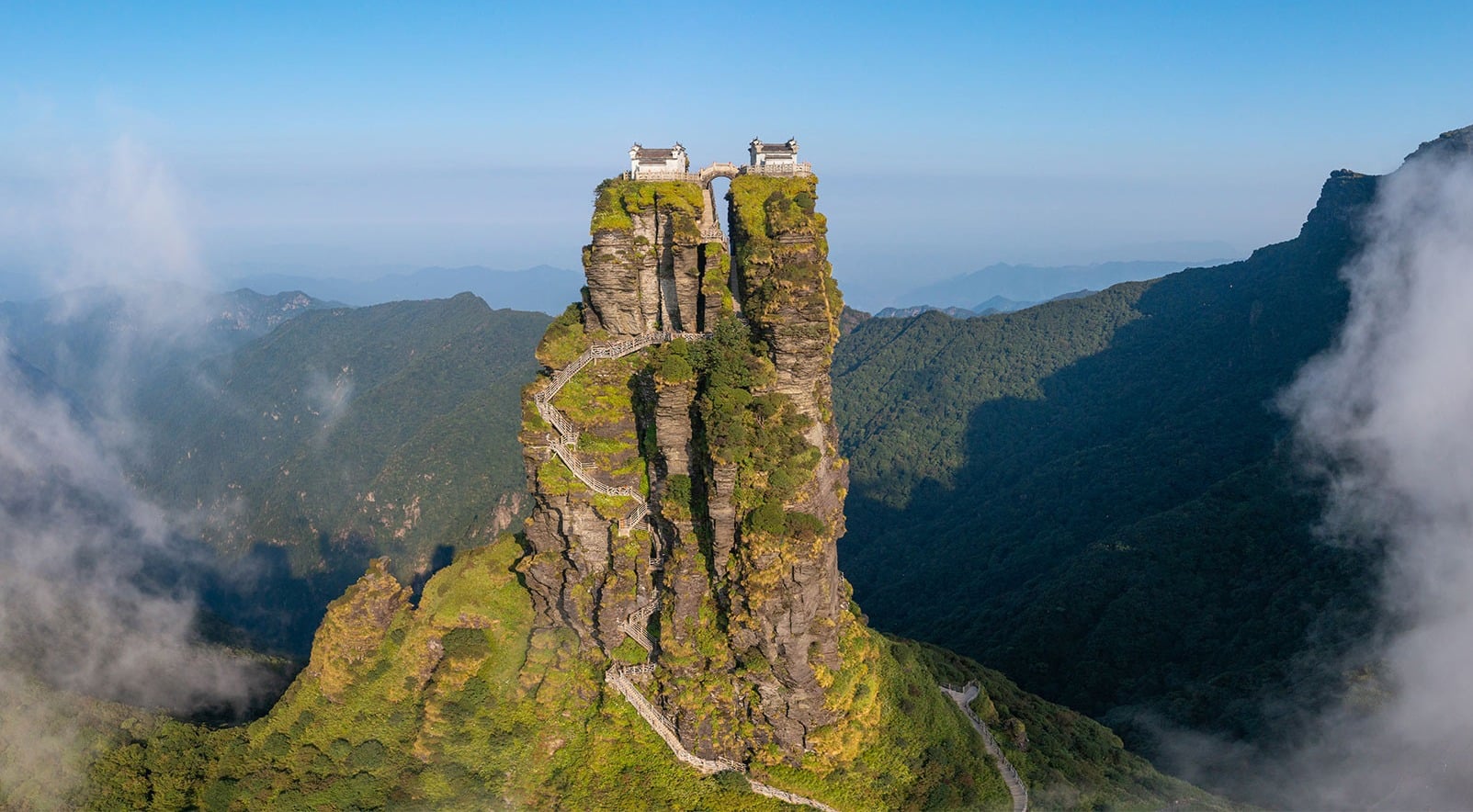
The Temples in the Air
At the pinnacle of Fanjingshan lies the Red Clouds Golden Peak (红云金顶), home to the Fanjingshan Temple complex, which includes the Temple of the Buddha and the Maitreya Temple.
The two temples, perched 2,336 meters (7,664 feet) above sea level, are linked by a narrow stone bridge spanning the deep Gold Sword Gorge.
The Temple of the Buddha, dedicated to Sakyamuni, represents the present.
The Maitreya Temple signifies the future.

The temples were originally built during the Yongle period of the Ming Dynasty, over 500 years ago.
The current structures have been meticulously restored to their historical appearance, with iron tiles added to protect them from the harsh mountain winds.
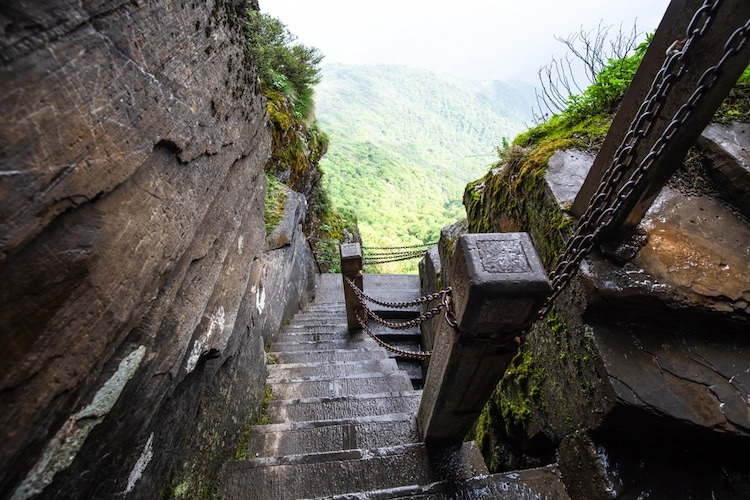
The journey to these temples involves climbing approximately 8,888 steps, a pilgrimage that rewards visitors with breathtaking views and a profound spiritual experience.
Other Top Temples at Fanjingshan
Cheng’en Temple
Cheng’en Temple (承恩寺), also known as Shangcha Hall or Tea Serving Hall, is a historic site on Fanjingshan.
This temple was built during the early Ming Dynasty.
It spans 1,250 square meters and features a main hall that is 13.7 meters wide and 9 meters deep.
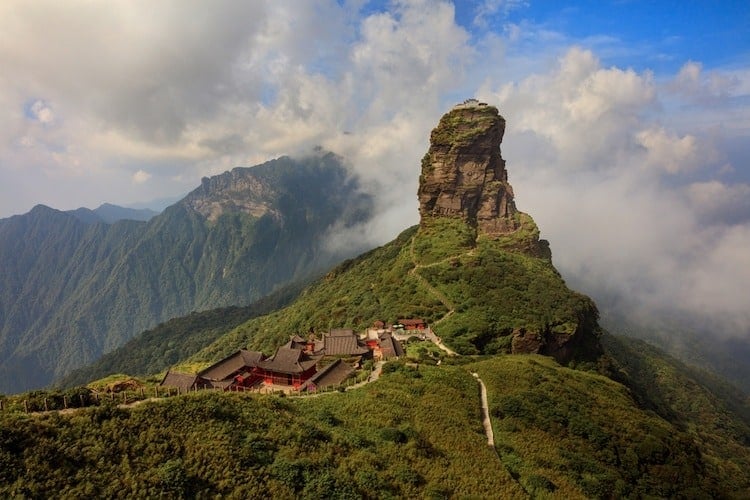
While some walls are damaged, the door of the temple is well-preserved and bears an inscription with seven Chinese characters: “圣旨敕赐承恩寺” (Sheng Zhi She Ci Cheng En Si), which translates to “Imperial Decree Granted to Cheng’en Temple.”
This inscription confirms that Cheng’en Temple was once a royal temple, commissioned by the imperial court.

Longquan Temple
Located about 1 kilometer from the entrance of Fanjingshan, Longquan Temple (龙泉寺), also known as Dragon Spring Temple, is another notable site.
This temple is famous for its giant statue of Maitreya Buddha, who is depicted with a plump belly and a cheerful smile.
The statue symbolizes contentment and optimism, encouraging visitors to approach life with a calm and open mind.
Both Cheng’en Temple and Longquan Temple contribute to the rich spiritual and historical landscape of Fanjingshan, offering visitors a glimpse into its deep Buddhist heritage.
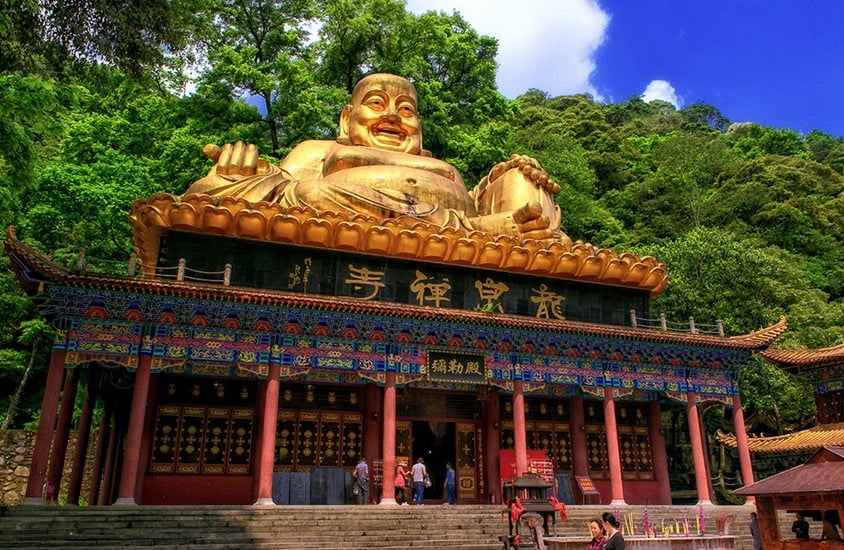
A Biodiversity Hotspot
Fanjingshan is also known for its rich biodiversity. The Fanjingshan National Nature Reserve, established in 1978 and a UNESCO Biosphere Reserve since 1986, covers 567 square kilometers (219 square miles).
This area protects one of the largest subtropical primeval beech forests and many rare species.
The mountain is home to the endangered Guizhou golden monkey and the Fanjingshan fir, as well as other rare animals like the Chinese giant salamander and forest musk deer.
Over 2,000 plant species, some dating back millions of years, also thrive here.

